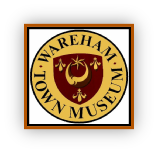
Home
Location
History
Family History
Wareham TC
Volunteering
Contact Info
Events
T E Lawrence
Exhibits
Guest Book
Links
Wareham, Dorset, United Kingdom

The History of Wareham, Dorset, UK
The town's strategic setting has made it an important settlement throughout its long history.
Archaeological evidence exists of a small Roman settlement, although the current town was founded by the Saxons. The Roman name is unknown, but the town is referred to as Werham in the Anglo-Saxon Chronicle entry of 784, from Old English wer (meaning 'fish trap, a weir') and hām ('homestead') or hamm ('enclosure hemmed in by water').
The town's oldest features are the town walls, ancient earth ramparts surrounding the town, likely to have been built by Alfred the Great in the 9th century to defend the town from the Danes as part of his system of burh towns. The Danes invaded and occupied Wareham i n 876, and only left after Alfred returned with an army and made a payment of Danegeld. In 998 they attacked again, and in 1015 an invasion led by King Canute left the town in ruins.
n 876, and only left after Alfred returned with an army and made a payment of Danegeld. In 998 they attacked again, and in 1015 an invasion led by King Canute left the town in ruins.
 n 876, and only left after Alfred returned with an army and made a payment of Danegeld. In 998 they attacked again, and in 1015 an invasion led by King Canute left the town in ruins.
n 876, and only left after Alfred returned with an army and made a payment of Danegeld. In 998 they attacked again, and in 1015 an invasion led by King Canute left the town in ruins.
Also in the town at the ancient Minster Church of Lady St. Mary is the coffin said to be that of Edward the Martyr, dating from 978. His remains had been hastily buried there and were later taken from Wareham to Shaftesbury Abbey in north Dorset (and now lie in Brookwood Cemetery, Surrey).
By the end of the Saxon period, Wareham had become one of the most important towns in the county, to the extent that it housed two mints for the issue of Royal money.
During the English Civil War, Wareham changed hands several times between the Royalists and Parliamentarians and in August 1644 was the site of a fierce ba ttle with 2,000 Cromwellian soldiers besieging the town.
ttle with 2,000 Cromwellian soldiers besieging the town.
 ttle with 2,000 Cromwellian soldiers besieging the town.
ttle with 2,000 Cromwellian soldiers besieging the town.
After the Monmouth Rebellion of 1685, Wareham was one of a number of towns in Dorset where Judge Jeffreys held the Bloody Assizes, with five rebels being hanged, drawn and quartered on the West Walls, an area known as 'Bloody Bank'.
In 1762 a fire destroyed two thirds of the town, which has been rebuilt in Georgian architecture with red brick and Purbeck limestone but still following the earlier street pattern. The town is divided into four quarters by the two main roads which cross at right-angles. The medieval almshouses escaped the fire and some of the Georgian façades are in fact disguising earlier buildings which also survived.
With the outbreak of the First World War in 1914, Wa reham became a garrison town with up to 7,000 soldiers living and training locally. The camp was re-
reham became a garrison town with up to 7,000 soldiers living and training locally. The camp was re-located to nearby Bovington in 1922. The town survived the Second World War largely intact, although five houses were destroyed when a bomb dropped by a German aeroplane fell near St Martin's Church, North Street, in 1942.
 reham became a garrison town with up to 7,000 soldiers living and training locally. The camp was re-
reham became a garrison town with up to 7,000 soldiers living and training locally. The camp was re-
Because of the constraints of the two rivers (the Frome and the Piddle), Wareham grew little during the 20th century and, with the rivers themselves silting up over time, most water trade was transferred to nearby Poole.

Wareham Town Museum evolved from the Wareham Pictorial Museum, a private collection owned by Mr and Mrs Broughton and opened in 1960 in their home in North Street. Harry Broughton was a former mayor of Wareham.
When this museum closed, Wareham Town Council acquired the collection and established a museum in St John's Hill in 1974. This moved to the present premises in the Town Hall building in 1984.
In 1998 Wareham Town Museum was refurbished and expanded with a grant from the Heritage Lottery Fund.
Early Beginnings ...
Wareham Town Hall
and Museum
and Museum


History of the Wareham Town Museum
The Pubs of Wareham, Dorset, UK
- Past and Present -
-
In this delightful video local man, Hugh Elmes, explores the many pubs that were situated in Wareham, Dorset, UK over the years as well as those still active today.
Interestingly, this documentary was filmed only a week or two before the UK Government banned smoking indoors in public places, such as pubs, on 1st July 2007. The video also highlights little known facts about the ancient town of Wareham in South Dorset.